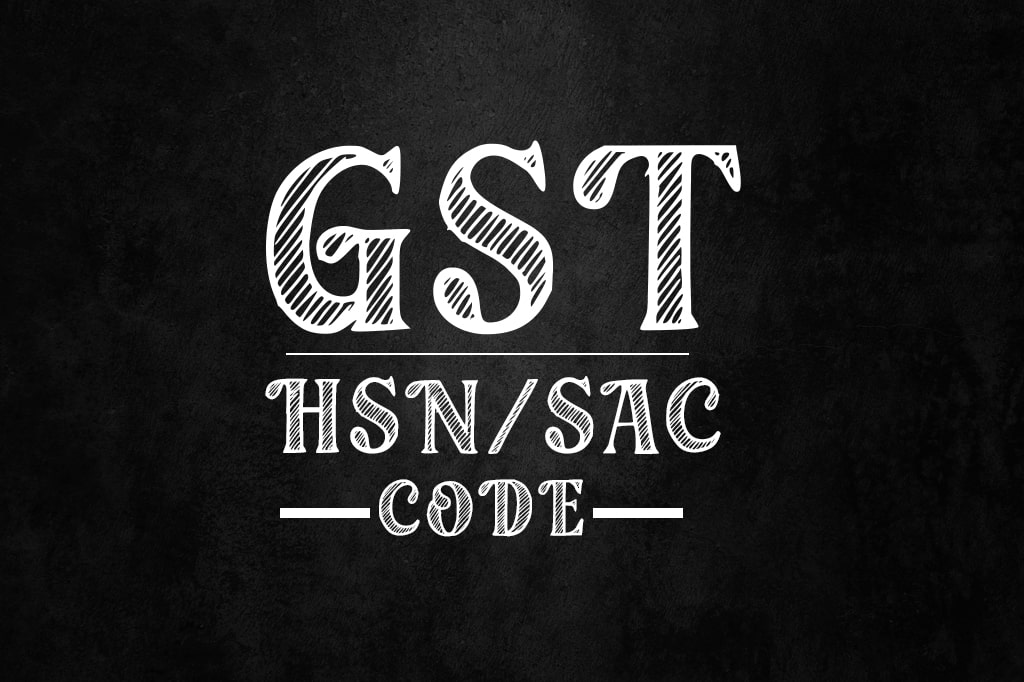Wondering the Importance of HSN and SAC Codes in Businesses ??? let’s see all about HSN Code and the SAC Code
HSNCode and the SAC Code serve as standards when it comes to categorizing products and services.
HSN code (Harmonized System of Nomenclature).
It is a standardized system for classification of goods worldwide. HSN code is a 6-digit uniform code that classifies 5000+ items and is acknowledged around the world. It came into effect from 1988 and was created by the World Customs Organisation (WCO).
India has been a part of the World Customs Organization (WCO) since 1971. Products were initially grouped using 6-digit HSN codes for Customs and Central Excise. Two extra digits were subsequently added by Customs and Central Excise to make the codes more precise, bringing about an eight-digit classification.
SAC Code (Services Accounting Code)
It is a standardized system for recognizing, valuing, and taxing services. Since the previous administration, SAC has been defined by the government for each kind of service in order to properly levy Service Tax. In the GST era, it is anticipated that the same code will remain. SACs are issued by the Service Tax Department of the Central Board of Indirect Tax & Customs to classify and identify the services provided. Like the unique HSN codes for various goods categories, each service has its own SAC code. The SAC code can and should be used by service providers to clearly understand the tax on services provided and received.
The Harmonized System of Nomenclature, which is a well-known international system for classifying and coding all goods, serves as the foundation for the SAC. The international standards-based compliance of GST is made possible by this system.
Use of HSN/SAC Code
The taxpayers shall mention HSN for goods and SAC for services in the following instances
GST Registration
Every business subject to the GST will be required to declare the kind of goods and services it provides. As a result, when registering, the correct HSN/SAC code must be provided.
GST Rate
If the taxpayer is familiar with the HSN/SAC code, he or she can easily determine the GST rate that applies to goods and services.
GST Invoice
A seller must include the HSN/SAC code in the invoice, which is based on the company’s total turnover of the business.
GST Returns
The HSN Summary must be reported by the taxpayer when he files the GST Return. The details of the products and services that were sold, sorted by HSN/SAC, should be included in the summary.
Importance of HSN and SAC Codes in Businesses
The GST rates of goods and services for businesses can be determined by using the HSN/SAC codes. These details must be included in order to register. Among the vast range of goods and services available, these codes help identify specific goods and services among the many. The primary distinction between SAC codes and HSN codes is that SAC codes only specify services, whereas HSN codes are intended exclusively for goods. Other than that, their code differs in both the number of digits and their significance. For instance, the SAC code has six digits, whereas the HSN code has eight digits.
Significance of HSN and SAC codes in businesses
- Businesses can utilize the HSN/SAC codes to find out the right GST rates that apply to particular goods and services.
- For registration, it is mandatory to mention this information.
- These codes aid in the identification of specific goods and services.
List of HSN and SAC codes in GST
Under GST, all goods and services supplied in India have been categorized: services are categorized under the SAC Code, and goods are categorized under the HSN Code. GST rates have been divided into five groups based on the HSN or SAC code: 0%, 5%, 18%, and 28%.
Under the GST system, each invoice must include the HSN code for all goods sold and the SAC code for all services rendered. As a result, businesses will need to be aware of the HSN code list and the SAC code list for all supplies that are subject to GST. Depending on their annual turnover, the majority of dealers will be required to use two, four, or eight-digit HSN codes under the GST.
HSN/SAC Applicability
Finding and updating the HSN/SAC for the goods supplied and service rendered may be difficult for many small businesses. As a result, the GST Council has relaxed the requirement to display HSN/SAC code in invoices based on sales turnover to ease the compliance burden of small businesses.
Based on Notification of Central Tax, requires the concerned individual to display the HSN/SAC code on the invoice by the following:
- Prior to April 1, 2021, taxpayers with a turnover of up to 1.5 crores were not required to provide HSN code for any supply, regardless of whether it was made to a registered or unregistered. However, as of this date, On April 1, 2021, all taxpayers with a turnover of less than 1.5 crores are also required to include a four-digit HSN code in any supplies they give to registered individuals.
- Taxpayers with a turnover of up to five Cores must include a four-digit HSN code only for supplies to registered individuals and not for supplies to unregistered individuals.
- Any taxpayer with a turnover of more than five crores must include six-digit HSN codes, regardless of whether the supply is made to a registered or unregistered individual.
What if you used the HSN code incorrectly?
Under GST, the buyer will not be able to claim his input tax credit if you used the wrong HSN/SAC Code. In accordance with Section 31, an invoice must be error-free throughout, including the precise HSN Code classification required to declare the input tax credit.
If you’ve stated an incorrect code as an exporter, it could cause problems with your shipment during customs review. Denial of import opportunities, substantial custom duty assessments, penalties for noncompliance, and other issues may arise.
Penalty
According to Section 125, if a taxpayer fails to comply with the amendments, they will be subject to a penalty of Rs. 25,000 for CGST, Rs. 25,000 for SGST, and Rs. 50,000 for IGST for each error they make under the CGST Act of 2017.
FAQ:
1. Is it necessary for the invoice to contain the HSN code?
During the process of submitting their GST returns, taxpayers classify their goods according to HSN codes. The HSN code is only required for taxpayers whose annual revenue exceeds 1.5 crores.
2. In GST, what is the SAC code?
The service code is referred to as the SAC code under the GST. A SAC code makes it easier to categorize the services that are provided.
3. What is an invoice’s SAC code?
The code associated with the services provided by the GST taxpayer is the SAC code on an invoice.
4. Does the GST invoice require the SAC code?
Yes, service providers must provide the SAC code if their annual total revenue is greater than Rs. 5 crore.
5. Are the SAC and HSN codes identical?
No, the codes for SAC and HSN are distinct. SAC codes are used for services, and HSN codes are used for goods.





